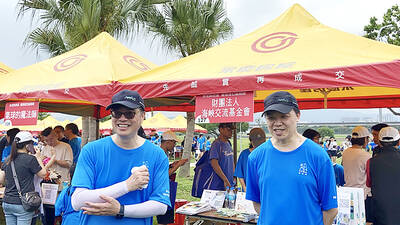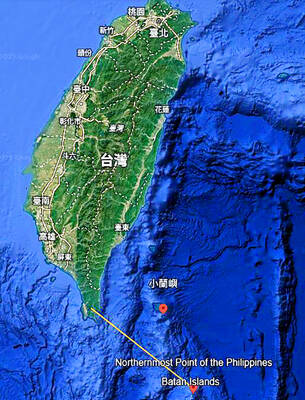Preparing for conflict with Taiwan — including deterring or defeating US intervention — remains the focus and “primary driver” of China’s military, a US Department of Defense annual report on China’s armed forces said.
The Chinese People’s Liberation Army (PLA) is also placing an emphasis on preparing for contingencies in the South and East China seas, the report released to the US Congress said on Thursday.
“As China’s interests, capabilities and international influences have grown, its military modernization program has also become increasingly focused on military investments for a range of missions beyond China’s coast, including sea lane security, counter-piracy, peacekeeping and humanitarian assistance,” the 100-page report said.
Although the dialogue between the US and China is improving, outstanding questions remain about the rate of growth in China’s military expenditures due to the lack of transparency regarding Beijing’s intentions.
Last year, China announced a 5.7 percent increase in its annual military budget to US$119.5 billion — continuing more than 20 years of sustained annual defense spending increases.
“As the US builds a stronger foundation for a military-to-military relationship with China, it also will continue to monitor China’s evolving military strategy, doctrine and force development and encourage China to be more transparent,” the report said.
“Dealing with a potential contingency in the Taiwan Strait remains the PLA’s primary mission despite an overall reduction of cross-strait tensions — a trend that continued following the re-election of Taiwan President Ma Ying-jeou [馬英九],” the report said.
Should conditions change, the PLA could be called upon to “compel” Taiwan to abandon possible moves toward independence or to “reunify” Taiwan with China by force of arms, it said.
Following Beijing’s leadership transition between 2012 and last year, China does not appear to have fundamentally altered its approach to Taiwan and despite “occasional signs of impatience” China appears content to respect Taiwan’s approach to cross-strait relations, the report said.
China is developing and testing several new classes and variants of offensive missiles, forming additional missile units, upgrading older missile systems and developing methods to counter ballistic missile defenses, it said.
China’s second artillery has deployed more than 1,000 short-range ballistic missiles to garrisons across from Taiwan and is fielding cruise missiles.
“Security in the Taiwan Strait is largely a function of dynamic interactions between and among mainland China, Taiwan and the US,” the report said.
China’s strategy toward Taiwan has been influenced by what it sees as positive developments in Taipei’s political situation and approach to engagement with Beijing, it said.
The report says that the two sides have made progress in expanding cross-strait trade, economic links, and people-to-people contacts, but that China’s overall strategy continues to “incorporate elements” of persuasion and coercion to deter or repress Taiwanese independence.
There are no signs that China’s “military disposition” toward Taiwan has changed, the report said.
“The PLA has continued to develop and deploy military capabilities to coerce Taiwan or to attempt an invasion, if necessary,” it said.
It says that China appears prepared to defer the use of force as long as it believes that unification over the long term remains possible and the costs of conflict outweigh the benefits.
“The PLA is capable of increasingly sophisticated military action against Taiwan,” the report said.
“It is possible China would first pursue a measured approach characterized by signaling its readiness to use force, followed by a deliberate buildup of force to optimize the speed of engagement over strategic deception,” it said.
The report said that another option would be for China to sacrifice overt, large-scale preparations in favor of surprise to force rapid military or political resolution before other countries could respond.
“China today probably could not enforce a full military blockade, but its ability to do so will improve significantly over the next five or 10 years,” the report said.
In a limited campaign against Taiwan, China might use a variety of disruptive, punitive or lethal military actions in conjunction with overt and clandestine economic and political activities.
A campaign could include computer networks or limited kinetic attacks against Taiwan’s political, military and economic infrastructure to induce fear and degrade confidence in the Taipei leadership.
Large-scale amphibious invasion, the report said, is one of the most complicated and difficult military operations and an attempt to invade Taiwan would “invite international intervention.”
This would be a significant political and military risk, it said.
Moreover, China does not appear to be building the conventional amphibious lift required to support such a campaign, it said.
The report says that the second artillery is prepared to conduct missile attacks and precision strikes against Taiwan’s air defense systems, air bases, radar sites, missiles, space assets and communications facilities in an attempt to degrade Taiwan’s defenses, neutralize the nation’s leadership or break the public’s will to fight.
Meanwhile, the PLA air force has stationed a large number of advanced aircraft within close range of Taiwan, providing a significant capability to conduct air superiority and ground attack operations.
The PLA navy is improving anti-air and anti-surface warfare capabilities, developing a credible at-sea nuclear deterrent and introducing new platforms that are positioned to strike Taiwan.
PLA ground forces are conducting joint training exercises that are to prepare them for a Taiwan invasion scenario.
The report said that Taiwan has historically relied upon multiple military variables to deter PLA aggression: the PLA’s inability to project sufficient power across the Taiwan Strait, the nation’s military’s technological superiority and the inherent geographic advantages of island defense.
Yet, the report said, China’s increasingly modern weapons and platforms of more than 1,200 ballistic missiles, an anti-ship ballistic missile program, ships, submarines and combat aircraft “have eroded or negated many of these factors.”

SECURITY: As China is ‘reshaping’ Hong Kong’s population, Taiwan must raise the eligibility threshold for applications from Hong Kongers, Chiu Chui-cheng said When Hong Kong and Macau citizens apply for residency in Taiwan, it would be under a new category that includes a “national security observation period,” Mainland Affairs Council (MAC) Minister Chiu Chui-cheng (邱垂正) said yesterday. President William Lai (賴清德) on March 13 announced 17 strategies to counter China’s aggression toward Taiwan, including incorporating national security considerations into the review process for residency applications from Hong Kong and Macau citizens. The situation in Hong Kong is constantly changing, Chiu said to media yesterday on the sidelines of the Taipei Technology Run hosted by the Taipei Neihu Technology Park Development Association. With

CARROT AND STICK: While unrelenting in its military threats, China attracted nearly 40,000 Taiwanese to over 400 business events last year Nearly 40,000 Taiwanese last year joined industry events in China, such as conferences and trade fairs, supported by the Chinese government, a study showed yesterday, as Beijing ramps up a charm offensive toward Taipei alongside military pressure. China has long taken a carrot-and-stick approach to Taiwan, threatening it with the prospect of military action while reaching out to those it believes are amenable to Beijing’s point of view. Taiwanese security officials are wary of what they see as Beijing’s influence campaigns to sway public opinion after Taipei and Beijing gradually resumed travel links halted by the COVID-19 pandemic, but the scale of

A US Marine Corps regiment equipped with Naval Strike Missiles (NSM) is set to participate in the upcoming Balikatan 25 exercise in the Luzon Strait, marking the system’s first-ever deployment in the Philippines. US and Philippine officials have separately confirmed that the Navy Marine Expeditionary Ship Interdiction System (NMESIS) — the mobile launch platform for the Naval Strike Missile — would take part in the joint exercise. The missiles are being deployed to “a strategic first island chain chokepoint” in the waters between Taiwan proper and the Philippines, US-based Naval News reported. “The Luzon Strait and Bashi Channel represent a critical access

Pope Francis is be laid to rest on Saturday after lying in state for three days in St Peter’s Basilica, where the faithful are expected to flock to pay their respects to history’s first Latin American pontiff. The cardinals met yesterday in the Vatican’s synod hall to chart the next steps before a conclave begins to choose Francis’ successor, as condolences poured in from around the world. According to current norms, the conclave must begin between May 5 and 10. The cardinals set the funeral for Saturday at 10am in St Peter’s Square, to be celebrated by the dean of the College